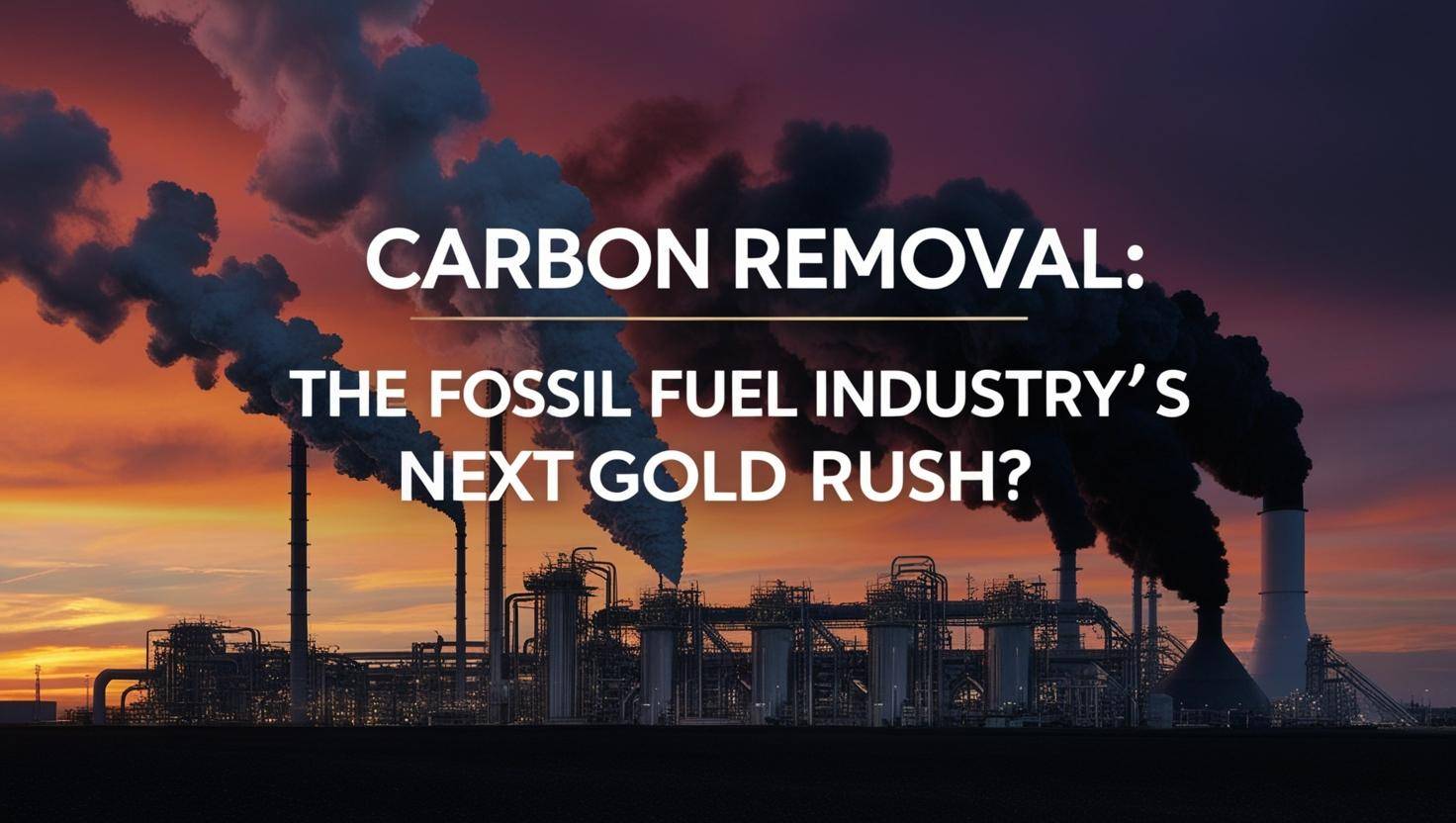Introduction
The global energy industry is undergoing a massive transformation. As governments, corporations, and consumers push for cleaner energy alternatives, fossil fuel companies are looking for ways to stay relevant in a decarbonizing world. One strategy gaining significant traction is carbon removal, an emerging industry that promises to offset emissions while keeping fossil fuels in play. But is carbon removal truly a climate solution, or is it just another way for oil giants to prolong their dominance?
Understanding Carbon Removal
Carbon removal, also known as carbon dioxide removal (CDR), involves capturing CO2 from the atmosphere and either storing it underground or utilizing it in industrial processes. The key technologies include:
Direct Air Capture (DAC): Machines that pull CO2 directly from the air and store it underground.
Bioenergy with Carbon Capture and Storage (BECCS): Using plants to absorb CO2 and then capturing emissions when they are burned for energy.
Enhanced Weathering: Speeding up natural rock processes that absorb CO2.
Ocean-based Carbon Removal: Techniques that enhance the ocean’s natural ability to absorb CO2.
Why Fossil Fuel Companies Are Betting on Carbon Removal
With increasing pressure to curb greenhouse gas emissions, oil companies see carbon removal as a lifeline. Here’s why:
1. Extending the Life of Fossil Fuels
Many oil giants argue that carbon removal can make fossil fuels more sustainable by offsetting emissions. By investing in these technologies, companies like ExxonMobil, Shell, and BP aim to continue oil and gas production while reducing their net carbon footprint.
2. Government and Corporate Incentives
Governments worldwide are offering subsidies and tax credits for carbon removal initiatives. In the U.S., the Inflation Reduction Act provides significant incentives for carbon capture and storage (CCS). Similarly, major corporations are investing in carbon removal to meet their net-zero commitments.
3. Public Relations and ESG Goals
Oil companies face intense scrutiny over their environmental impact. Investing in carbon removal allows them to improve their public image and align with Environmental, Social, and Governance (ESG) criteria, attracting more investors and securing regulatory approvals.
The Economic Potential of Carbon Removal
Market Growth and Investment Trends
The carbon removal industry is projected to be worth $1 trillion by 2050, with substantial investments flowing into the sector. Startups like Clime works and Carbon Engineering have secured funding from venture capital firms and tech giants like Microsoft.
Job Creation and Economic Opportunities
As the industry grows, it could generate thousands of jobs in research, engineering, and operations, offering new opportunities in a cleaner economy.
Challenges and Controversies
While carbon removal offers potential benefits, it is not without criticism:
1. High Costs and Energy Requirements
Carbon removal technologies are expensive and require large amounts of energy, which can negate some of their environmental benefits.
2. Potential Green washing
Critics argue that fossil fuel companies are using carbon removal as a smokescreen to delay transitioning to renewable energy.
3. Uncertain Long-Term Effectiveness
Many carbon removal solutions are still in experimental stages, and their large-scale effectiveness remains unproven.
The Future of Carbon Removal and Fossil Fuels
The success of carbon removal will depend on policy support, technological advancements, and corporate commitment to real climate action. While it has the potential to be a valuable tool in the fight against climate change, it should not be used as an excuse to continue fossil fuel dependency.
Conclusion
Carbon removal is emerging as a significant player in the climate change battle, with fossil fuel companies investing heavily in its potential. However, whether it represents genuine progress or a delay tactic remains to be seen. To truly combat climate change, carbon removal should complement, not replace, aggressive reductions in fossil fuel use and investments in renewable energy.


